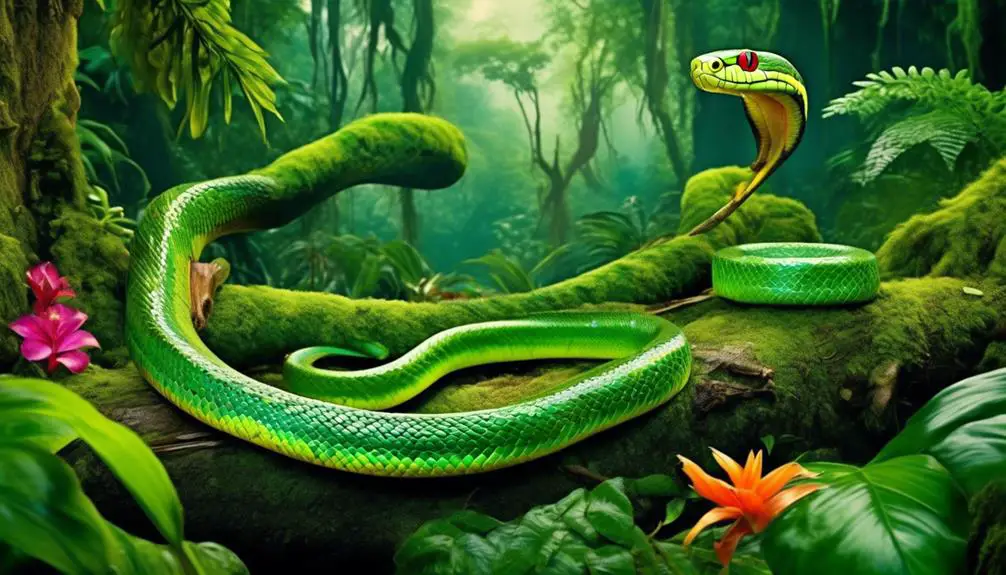As you wander through the lush landscapes of Jamaica, imagine the serpents that silently slither through the vibrant foliage, their scales glistening in the warm Caribbean sun. These creatures, often misunderstood and feared, hold a captivating presence in this tropical paradise.
But what exactly do we know about the snakes of Jamaica? How do they adapt to their surroundings, and what role do they play in the delicate ecosystem of this island nation?
Join us as we unravel the mysteries and uncover the secrets of these intriguing creatures, for their tale is one that will both fascinate and surprise you.
Non-venomous Snakes in Jamaica
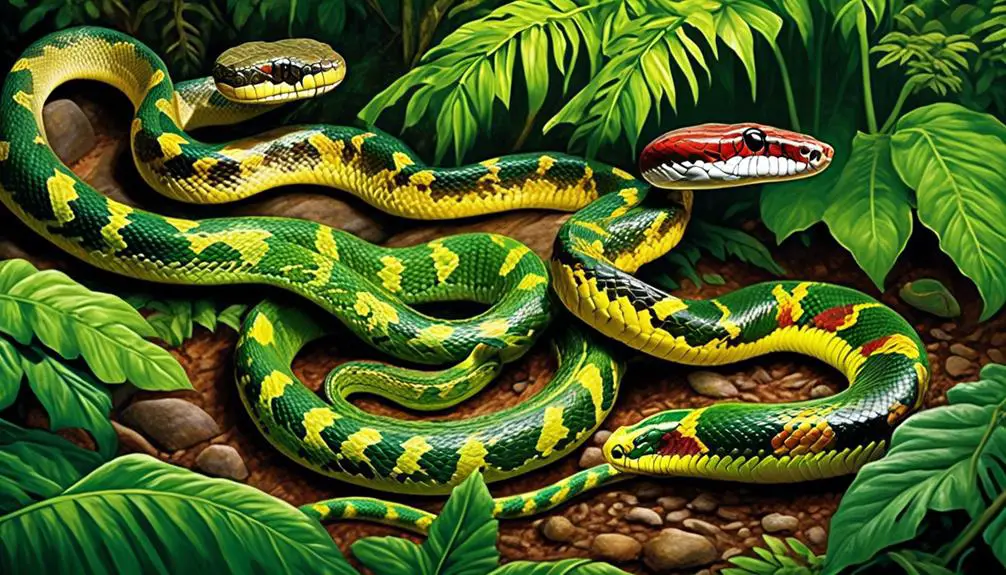
Non-venomous snakes in Jamaica include the Jamaican Boa, Jamaican Dwarf Boa, Grass snake, Jamaican Groundsnake, Jamaican Blind Snake, Jamaican Eyespot Boa, and Portland Ridge Dwarf Boa.
The Jamaican Boa, also known as the yellow snake, is the largest snake in Jamaica, growing up to six feet long. It has a distinctive yellow and black zig-zag pattern on its body. This species feeds on a variety of prey, including lizards, rodents, birds, and bats.
The Jamaican Dwarf Boa, also known as wood snakes or thunder snakes, is a smaller species, growing up to sixty centimeters long. It primarily inhabits forests and swamps and feeds on frogs and lizards.
The Grass snake is another non-venomous snake species in Jamaica, typically sporting a dark green body and reaching lengths of up to seventy centimeters. It’s commonly found near ponds, rivers, and lakes and preys on small amphibians.
The Jamaican Groundsnake, also known as the Jamaican Racer, is facing a rapid decline in population. It resides on the east coast of Jamaica and feeds mainly on small frogs and lizards.
The Jamaican Blind Snake is the smallest snake on the island, living mostly underground and possessing virtually no power of sight. Its color can vary from grey, brown, to pink.
The Jamaican Eyespot Boa, belonging to the tropidophis family, is a highly secretive snake rarely encountered. It has bright orange or dark brown coloration and feeds on small frogs and lizards.
Characteristics of the Jamaican Boa
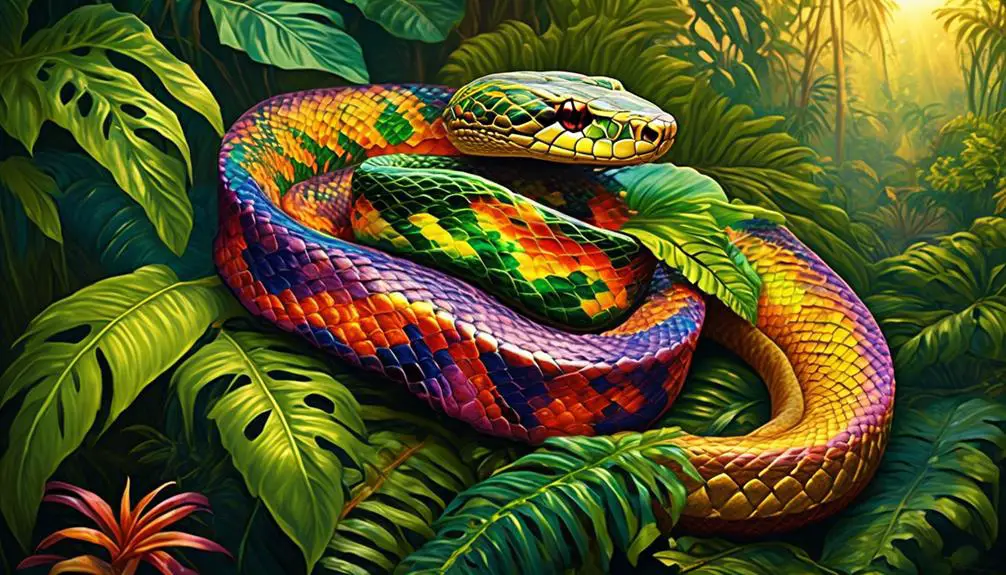
The Jamaican Boa, the largest snake species in Jamaica, possesses distinct characteristics that set it apart from other non-venomous snakes on the island. This impressive snake can grow up to six feet in length, making it the largest terrestrial predator in Jamaica. Its body is covered in a yellow and black zig-zag pattern, which provides excellent camouflage in its natural habitat. The Jamaican Boa is a constrictor, meaning it kills its prey by squeezing it until it can no longer breathe. Despite its size and hunting technique, this snake is harmless to humans.
The average adult Jamaican Boa measures around six feet in length, but there have been extreme examples that exceed eight feet. Its large size allows it to prey on a variety of animals, including lizards, rodents, birds, and bats. This adaptability makes the Jamaican Boa a formidable predator in its ecosystem.
In addition to its size, the Jamaican Boa has other notable characteristics. It has a muscular body and a strong grip, allowing it to climb trees and move stealthily through its environment. This snake also has a keen sense of smell, which helps it locate its prey.
Venomous Snakes in Jamaica
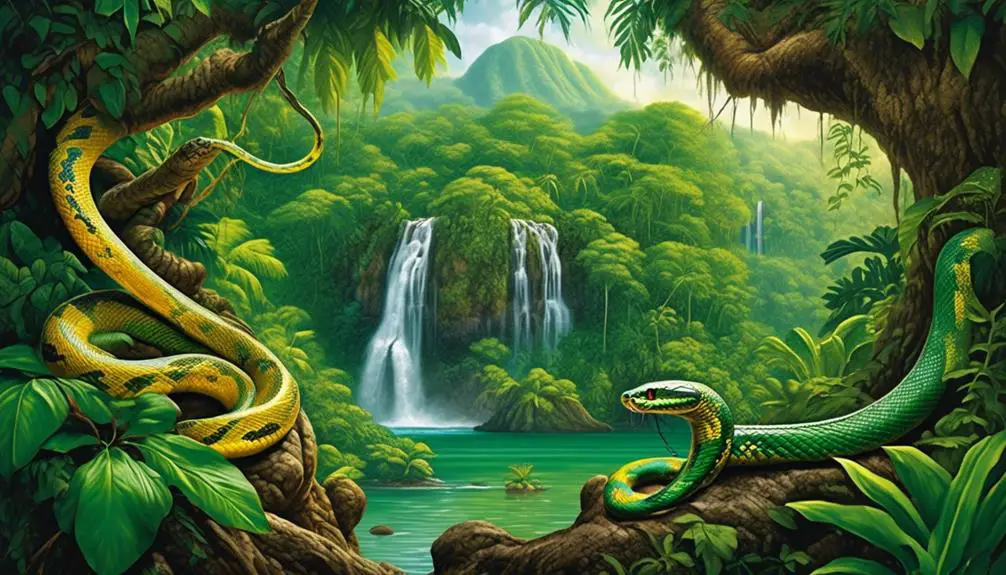
Now let’s turn our attention to venomous snakes in Jamaica.
While there are no venomous snake species found on the island, it’s still important to be aware of potential dangers and risks associated with encountering snakes.
Understanding snake safety guidelines can help ensure your well-being and minimize any potential harm.
Venomous Snake Species
Jamaica is fortunate to be home to a diverse array of snake species. The absence of venomous snakes is a unique characteristic of the island’s ecosystem and contributes to its overall safety. This means that residents and visitors can explore the natural beauty of Jamaica without worrying about encountering a venomous snake. While there are non-venomous snake species present, such as the Jamaican Boa and Jamaican Blind Snake, they pose no threat to humans. The focus on non-venomous snake species allows for a deeper appreciation and understanding of the ecological balance in Jamaica, as well as the importance of biodiversity conservation efforts.
Potential Dangers and Risks
As we shift our focus to discussing the potential dangers and risks associated with snakes in Jamaica, it is crucial to recognize the absence of venomous snake species on the island. This means that visitors and residents alike can take solace in the fact that encounters with venomous snakes are highly unlikely. The non-venomous snake species found in Jamaica, such as the Jamaican Boa, Jamaican Dwarf Boa, Grass Snake, Jamaican Groundsnake, Jamaican Blind Snake, Jamaican Eyespot Boa, and Portland Ridge Dwarf Boa, pose no threat to humans. These snakes play important roles in the ecosystem, controlling populations of small amphibians, frogs, lizards, rodents, birds, and bats. It is always important to exercise caution and respect when encountering any snake, but in Jamaica, the absence of venomous snakes ensures a safer environment for both humans and these remarkable reptiles.
| Non-venomous Snakes in Jamaica | Characteristics | Diet |
|---|---|---|
| Jamaican Boa | – Largest snake in Jamaica | – Lizards |
| – Can grow up to six feet in length | – Rodents | |
| – Kills prey through constriction | – Birds | |
| – Harmless to humans | – Bats | |
| – Largest terrestrial predator | ||
| – Average adult is around six feet | ||
| – Some can grow over eight feet long |
Snake Safety Guidelines
To ensure your safety when encountering venomous snakes in Jamaica, it’s important to follow these snake safety guidelines.
Firstly, always be aware of your surroundings and watch where you step, especially in areas with dense vegetation or rocky terrain. Venomous snakes in Jamaica include the Jamaican Boa, the Jamaican Racer, and the Jamaican Blind Snake.
If you come across a venomous snake, don’t approach or try to handle it. Maintain a safe distance and give the snake enough space to retreat.
It’s crucial to wear appropriate footwear, such as closed-toe shoes or boots, to protect your feet from potential snake bites. Additionally, avoid tall grass, piles of leaves, and fallen logs where snakes may hide.
Sea Snakes in Jamaica
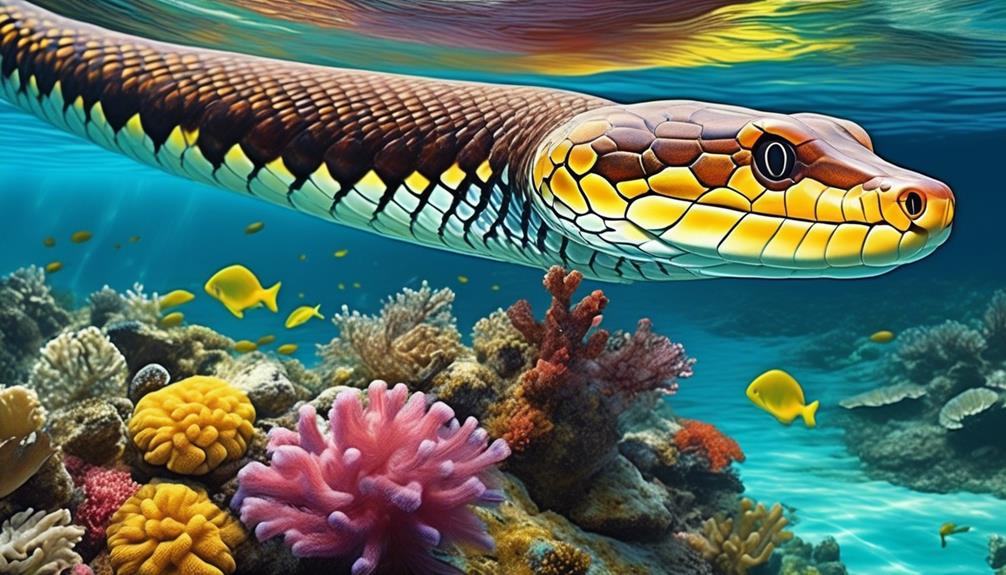
The coastal waters of Jamaica are devoid of sea snakes, making it a safe destination for swimmers and beachgoers alike. Sea snakes, also known as hydrophiids, are a group of highly venomous reptiles that are adapted to marine environments. However, these creatures aren’t found in the waters surrounding Jamaica. This is due to a combination of factors, including the island’s geographical location and the absence of suitable habitat and prey.
Sea snakes are typically found in tropical and subtropical waters, particularly in the Indian and Pacific Oceans. They’ve evolved unique adaptations that allow them to survive and thrive in the marine environment, such as flattened tails for swimming and the ability to breathe through their skin. Their venomous bites can be extremely dangerous to humans, making encounters with sea snakes a significant concern in many coastal areas.
Fortunately, Jamaica doesn’t have to worry about the presence of sea snakes. The island’s coastal waters are free from these venomous reptiles, ensuring the safety of those who enjoy its beautiful beaches and indulge in various water activities. Instead, visitors to Jamaica can focus on exploring its vibrant coral reefs, swimming in the crystal-clear waters, and marveling at the diverse marine life that inhabits its coastal ecosystems.
.
About Valletta and Gozo
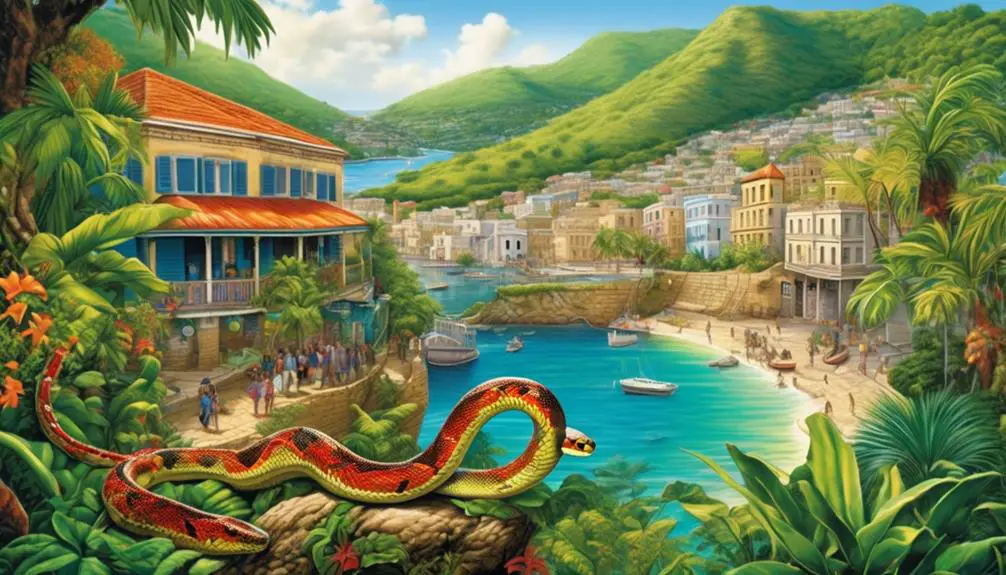
Valletta, the capital city of Malta, is a UNESCO World Heritage site known for its rich history and stunning architecture. The city’s fortified walls, built by the Knights of St. John in the 16th century, provide a glimpse into the island’s past. Explore the narrow streets and discover the grandeur of St. John’s Co-Cathedral, home to Caravaggio’s famous masterpiece, The Beheading of Saint John the Baptist. Don’t miss a visit to the Upper Barrakka Gardens, where you can enjoy panoramic views of the Grand Harbor.
On the other hand, Gozo, the second-largest island in the Maltese archipelago, offers a more laid-back and rural experience. Known for its picturesque landscapes and tranquil villages, Gozo is perfect for nature lovers and those seeking a slower pace of life. Visit the stunning Azure Window, a natural rock formation that was a popular tourist attraction until its collapse in 2017. Explore the ancient Ġgantija Temples, one of the oldest freestanding structures in the world. Gozo is also famous for its crystal-clear waters and snorkeling spots, such as the Blue Hole and Ramla Bay.
Whether you choose to explore the historic streets of Valletta or unwind in the natural beauty of Gozo, both destinations offer a unique and unforgettable experience for travelers.

Erzsebet Frey (Eli Frey) is an ecologist and online entrepreneur with a Master of Science in Ecology from the University of Belgrade. Originally from Serbia, she has lived in Sri Lanka since 2017. Eli has worked internationally in countries like Oman, Brazil, Germany, and Sri Lanka. In 2018, she expanded into SEO and blogging, completing courses from UC Davis and Edinburgh. Eli has founded multiple websites focused on biology, ecology, environmental science, sustainable and simple living, and outdoor activities. She enjoys creating nature and simple living videos on YouTube and participates in speleology, diving, and hiking.

